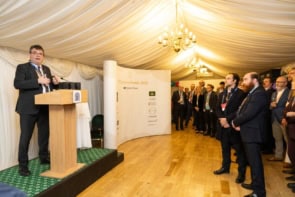
The American Physical Society (APS) has kick-started a pilot programme that is designed to provide helium at affordable prices for US academic researchers who need only small amounts of the element. The APS plan will involve the Defense Logistics Agency (DLA) negotiating the cost for helium with suppliers for researchers who are funded by government grants. The DLA already buys helium on behalf of the Department of Defense, of which it is a part.
Physicists routinely use helium to cool lab experiments and it is needed in large quantities to cool the superconducting magnets in particle accelerators. Helium also cools the magnets in magnetic-resonance-imaging machines and plays a critical role in the manufacture of microchips and optical fibres. Shortages of helium have become regular occurrences in recent years after uses for the gas have expanded.
While big laboratories and national labs can negotiate a good price for helium from suppliers, owing to the vast quantities that they need, smaller users – such as single principal investigators buying 100 litres at a time – find that suppliers can charge higher prices. “[Smaller buyers] don’t have the same purchasing power,” says Mark Elsesser, a policy analyst at the APS who will serve as a liaison between researchers and the DLA.
Indeed, researchers at Pennsylvania State University pay $7.50 per litre of liquid helium – almost half what Rutgers University in New Jersey pays. “The hope from this programme is that some universities in a poor position to negotiate with particular vendors will have access to helium,” says Moses Chan, a low-temperature physicist at Penn State. On top of this, users at the end of suppliers’ delivery routes might receive only 75 or 80 litres in a 100 litre Dewar flask, owing to evaporation.
The more the merrier
The plan between the APS and the DLA originated after APS members warned the society about their problems obtaining liquid helium at an affordable price. After hearing a presentation on the issue by Chan in March, two representatives from the DLA offered to help, and the programme was then set up. The American Chemical Society came on board the following month, helping to improve the programme’s reach. “We’re looking for a diverse set of users in geography and supply demands,” Elsesser says. “Chemists have a much more regular schedule of delivery.”
The team is now looking for research groups to participate in the programme and is publicizing it via newsletters, journal articles and webinars, as well as a dedicated page on the APS’s website that will offer information about the programme. “Starting with a pilot programme allows us to evaluate how it works, its potential benefits, and which type of academic user is a good fit for it,” says Elsesser. “Then we’ll look at where users are located, where supply needs are and other issues.” The consortium expects to review the helium-purchasing plan in December 2015. If successful, a full-scale roll-out should start in 2016.



